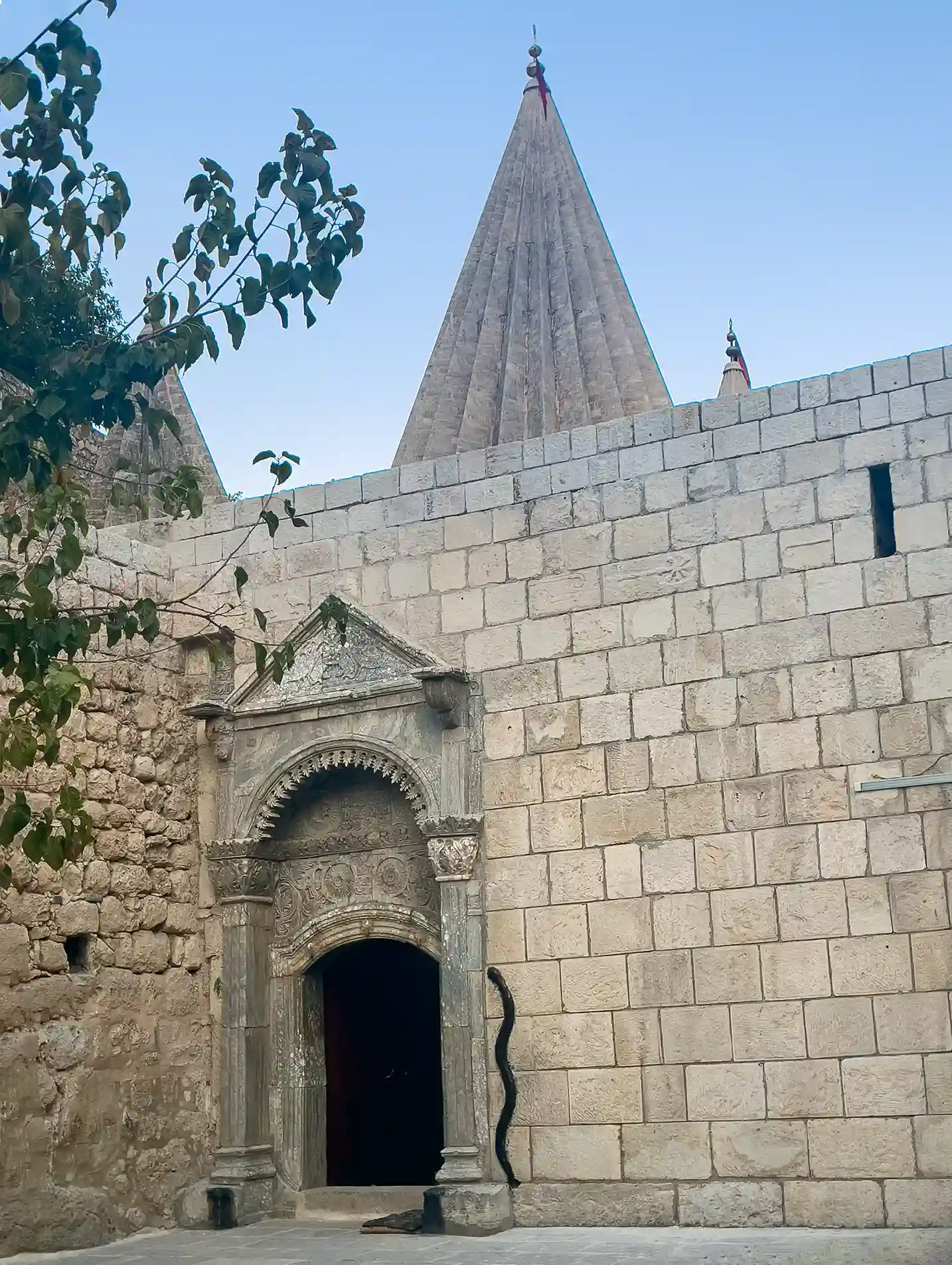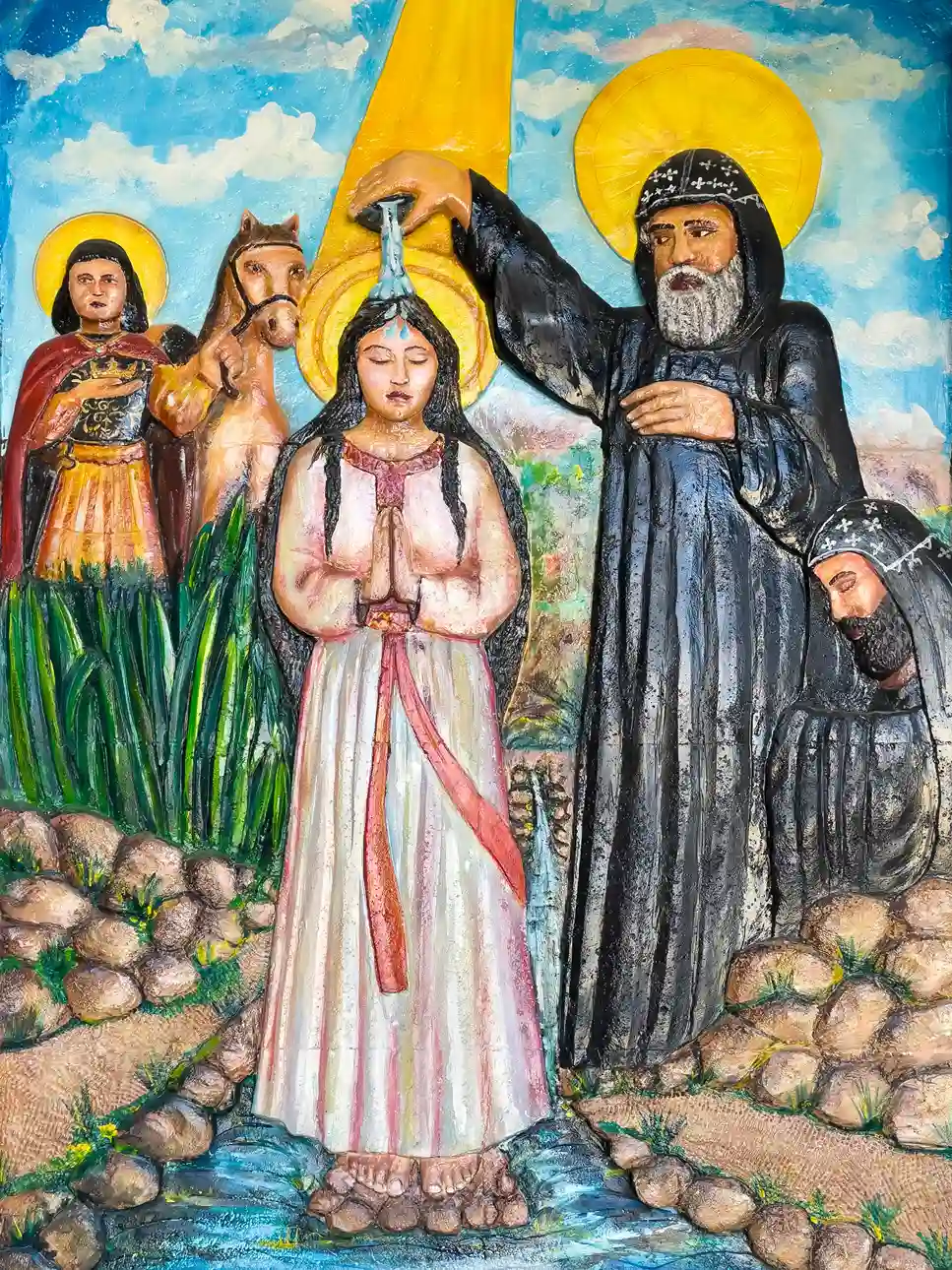Sacred Sites of Kurdistan
Shrine of Sheikh Adi ibn Musafir (Yazidi Temple), Lalish
The Shrine of Sheikh Adi ibn Musafir in Lalish is the most sacred site for the Yazidi faith. Sheikh Adi, a 12th-century Sufi mystic, is considered a central figure in Yazidi theology. The temple complex, nestled in a valley, features unique architectural elements and serves as the focal point for Yazidi religious rituals and festivals. Pilgrims from around the world visit Lalish to honor Sheikh Adi and participate in sacred traditions.
Shrine of Sheikh Abdul Aziz al Gilani, Akre
The Shrine of Sheikh Abdul Aziz al Gilani in Akre is a revered site for Sufi Muslims in Kurdistan. Sheikh Abdul Aziz al Gilani was a respected Sufi saint, and his shrine is a place of pilgrimage and spiritual reflection. Devotees visit the shrine to seek blessings, offer prayers, and participate in Sufi practices. The site's tranquil atmosphere and historical significance make it an important religious destination.
Mar Mattai Monastery
Mar Mattai Monastery, located on Mount Maqloub near Mosul, is one of the oldest Christian monasteries in existence. It was founded in the 4th century by Saint Matthew the Hermit and has served as a center of Syriac Christianity for centuries. The monastery, with its ancient architecture and religious artifacts, attracts Christian pilgrims and visitors interested in the region's rich Christian heritage. It stands as a testament to the enduring presence of Christianity in the Kurdistan region.
Amadiya Citadel
While not exclusively a religious site, the ancient Amadiya Citadel in Iraqi Kurdistan holds historical and cultural significance for various religious groups. Perched atop a flat-topped mountain, the citadel has been a place of residence and refuge for diverse communities, including Assyrian Christians, Muslims, and Jews. Its strategic location and historical architecture reflect the region's complex religious and cultural heritage. The presence of old churches, mosques, and other historical structures within the citadel contributes to its importance as a cultural landmark.
Rabbi Daniel Synagogue, Zakho
The Rabbi Daniel Synagogue in Zakho, although currently in ruins, represents the historical presence of a Jewish community in Kurdistan. It stands as a testament to the once vibrant Jewish life in the region. Rabbi Daniel was a revered figure, and the synagogue, though no longer active, holds historical and cultural significance. It is a reminder of the diverse religious tapestry that has characterized Kurdistan for centuries.
Church of Mart Shmoni and Mar Gewargis, Erbil
The Church of Mart Shmoni and Mar Gewargis in Erbil is an important site for the Assyrian Christian community. Located within the ancient Citadel of Erbil, this church is a testament to the enduring presence of Christianity in the region. It holds religious services and gatherings, serving as a vital place of worship for local Christians. The Church's historical architecture and continuous use contribute to its significance as a religious and cultural landmark.
The Great Mosque of Erbil
The Great Mosque of Erbil, located in the heart of the Erbil Citadel, is a significant Islamic religious site. It is a place of daily prayer and Friday congregational worship for the Muslim community in Erbil. The mosque's historical architecture and central location make it an important religious and cultural landmark in the city. It reflects the long history of Islam in the Kurdistan region.

Martin Gray is a cultural anthropologist, writer and photographer specializing in the study of pilgrimage traditions and sacred sites around the world. During a 40 year period he has visited more than 2000 pilgrimage places in 160 countries. The World Pilgrimage Guide at sacredsites.com is the most comprehensive source of information on this subject.


